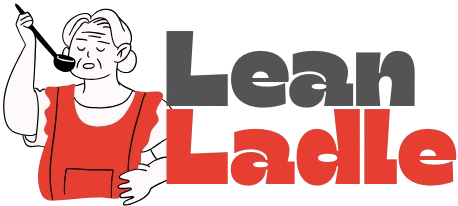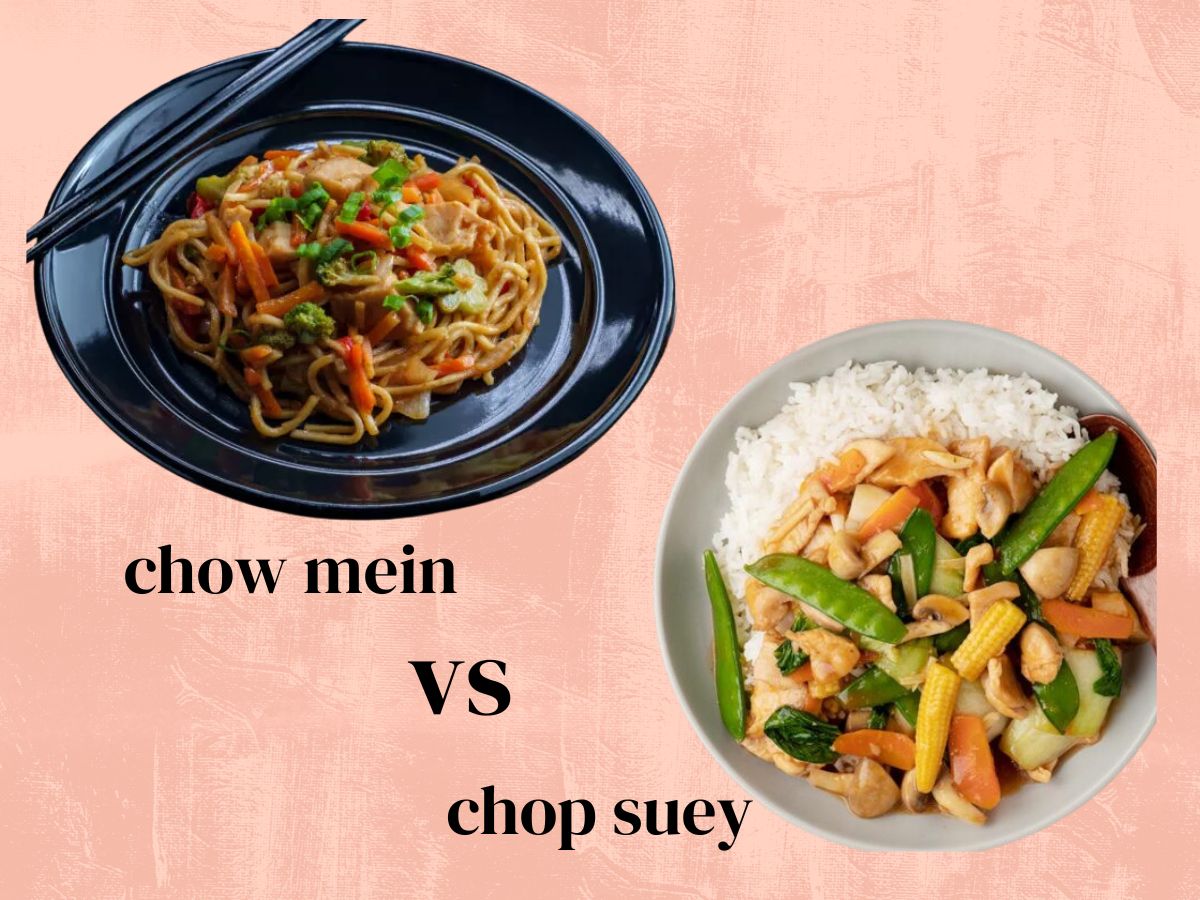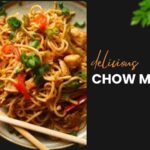When it comes to popular Chinese-American dishes, the debate of chow mein vs chop suey has puzzled food lovers for decades. These two beloved dishes may seem similar at first glance, but they have distinct differences in ingredients, preparation methods, and taste profiles that make each unique.
Whether you’re ordering from your favorite Chinese restaurant or planning to cook at home, understanding the differences between chow mein vs chop suey will help you make the perfect choice for your taste preferences. This comprehensive guide will break down everything you need to know about these classic dishes, from their ingredients and cooking methods to nutritional values and recipe variations.
Both dishes represent the evolution of Chinese cuisine in America, each offering its own delicious take on stir-fried vegetables, protein, and either noodles or rice. Let’s dive deep into what makes each dish special and help you decide which one deserves a spot on your dinner table tonight.
What is the Difference Between Chop Suey and Chow Mein?
The main difference between chow mein vs chop suey lies in their base ingredients and preparation style:
Chow Mein:
- Features stir-fried noodles as the main component
- Noodles are typically crispy or soft depending on preparation
- Vegetables and protein are mixed with the noodles
- Usually has a drier texture with less sauce
Chop Suey:
- Served over steamed rice instead of noodles
- Contains more vegetables in a light, savory sauce
- Has a saucier, more liquid consistency
- Often includes bean sprouts as a signature ingredient
The cooking methods also differ significantly. Chow mein involves stir-frying pre-cooked noodles with other ingredients, while chop suey focuses on stir-frying vegetables and protein in a wok before serving over rice.
Ingredient Comparison: Chow Mein vs Chop Suey
| Chow Mein | Chop Suey |
| Base: Fresh or dried Chinese egg noodles Protein: Chicken, beef, pork, shrimp, or tofu Vegetables: Cabbage, carrots, onions, bell peppers Seasonings: Soy sauce, oyster sauce, sesame oil Garnish: Green onions, sesame seeds | Base: Steamed white or brown rice Protein: Chicken, beef, pork, or mixed proteins Vegetables: Bean sprouts, celery, onions, mushrooms, bamboo shoots Sauce: Light cornstarch-based sauce with soy sauce Extras: Water chestnuts, snow peas |
Key Ingredient Differences:
Which has more vegetables chow mein or chop suey? Chop suey typically contains more vegetables by volume, as the dish focuses heavily on the vegetable medley rather than noodles taking up space in the dish.
Bean sprouts: Chop suey is the dish that traditionally includes bean sprouts as a signature ingredient, while chow mein rarely features them.
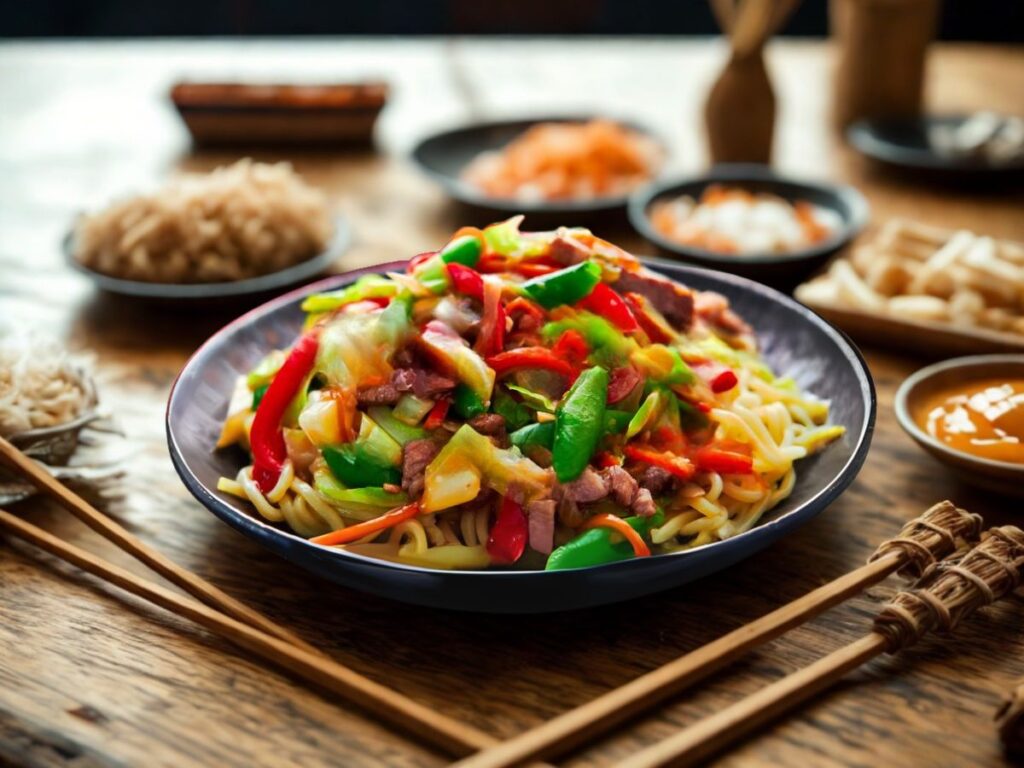
Cooking Procedures
| Chow Mein | Chop Suey |
| Prepare noodles: Cook egg noodles according to package directions, drain well Heat wok: Get your wok or large skillet very hot with oil Cook protein: Stir-fry your chosen protein until nearly cooked through Add vegetables: Include harder vegetables first, softer ones later Combine noodles: Add cooked noodles to the wok Season and toss: Add sauces and toss everything together Finish: Cook until noodles are slightly crispy and heated through | Prepare rice: Cook steamed rice separately and keep warm Heat wok: Use high heat with a small amount of oil Cook protein: Stir-fry protein until cooked through, remove and set aside Stir-fry vegetables: Cook vegetables in order of cooking time needed Make sauce: Combine soy sauce, broth, and cornstarch mixture Combine: Return protein to wok, add sauce Thicken: Stir until sauce thickens and coats ingredients Serve: Serve immediately over steamed rice |
Nutritional Value and Health Comparison
Chop Suey vs Chow Mein Healthier Options:
| Nutrition (per serving) | Chow Mein | Chop Suey |
| Calories Protein Carbohydrates Fat Fiber Sodium | 350-450 18-22g 45-55g 12-18g 3-5g 900-1200mg | 280-350 20-25g 35-40g 8-12g 4-6g 800-1000mg |
Which is Healthier: Chop Suey or Chow Mein?
Chop suey is generally considered the healthier option because:
- Contains more vegetables per serving
- Has fewer calories overall
- Lower in fat content
- Higher fiber content from vegetables
- Less processed ingredients (rice vs noodles)
However, both dishes can be made healthier by:
- Using brown rice instead of white rice
- Adding more vegetables
- Using less oil in cooking
- Choosing lean proteins
- Reducing sodium in sauces
Serving Size and Temperature Guide
Recommended Serving Sizes:
- Individual portion: 1.5-2 cups per person
- Family style: 4-6 cups serves 3-4 people
- Party serving: Plan 1 cup per person as a side dish
Optimal Serving Temperatures:
- Serving temperature: 140-160°F (60-71°C)
- Holding temperature: Keep above 140°F (60°C) for food safety
- Reheating: Heat to 165°F (74°C) when reheating leftovers
Storage Guidelines:
- Refrigerator: Store covered for up to 3 days
- Freezer: Can freeze for up to 2 months
- Reheating: Add a splash of broth or water when reheating
Pro Tips for Perfect Results
For Better Chow Mein:
- Use day-old noodles: Slightly dried noodles hold up better during stir-frying
- High heat is key: Keep your wok screaming hot for proper texture
- Don’t overcrowd: Cook in batches if making large quantities
- Sauce timing: Add sauces at the end to prevent burning
For Better Chop Suey:
- Vegetable order matters: Add vegetables based on cooking time needed
- Cornstarch slurry: Mix cornstarch with cold water before adding to prevent lumps
- Fresh ingredients: Use crisp, fresh vegetables for best texture
- Balance the sauce: Taste and adjust soy sauce, sugar, and seasonings
Universal Tips:
- Prep everything first: Have all ingredients cut and ready before cooking
- Don’t overcook vegetables: They should remain crisp-tender
- Quality ingredients: Use fresh vegetables and good-quality soy sauce
- Proper wok technique: Keep ingredients moving constantly
Recipe Variations
Chicken Chow Mein Recipe
Ingredients:
- 8 oz fresh chow mein noodles
- 1 lb chicken breast, sliced thin
- 2 cups mixed vegetables
- 3 tbsp soy sauce
- 1 tbsp oyster sauce
- 2 tsp sesame oil
Method: Follow basic chow mein procedure, cooking chicken first until golden before adding vegetables and noodles.
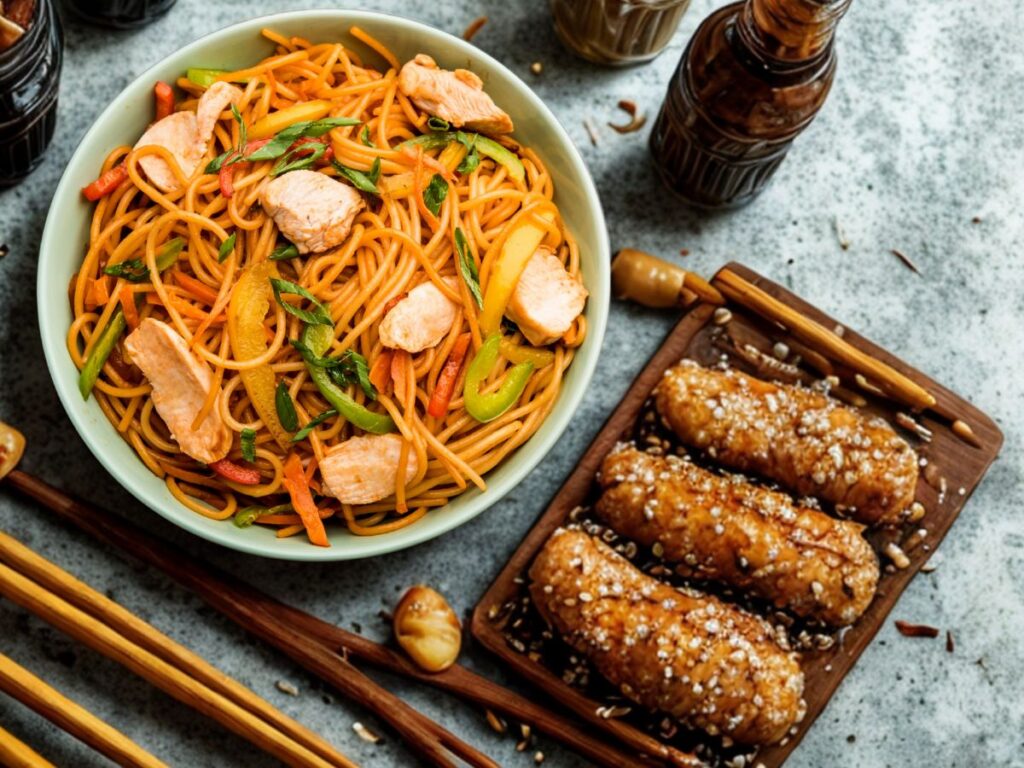
Classic Chicken Chop Suey Recipe
Ingredients:
- 1 lb chicken thighs, cut in pieces
- 3 cups mixed vegetables (bean sprouts, celery, onions)
- 2 cups chicken broth
- 2 tbsp cornstarch
- 3 tbsp soy sauce
- Steamed rice for serving
Method: Follow basic chop suey procedure, creating a light sauce with the broth and cornstarch mixture.
Vegetarian Variations
Vegetable Chow Mein: Replace protein with extra firm tofu or additional vegetables like broccoli, snap peas, and mushrooms.
Vegetable Chop Suey: Use vegetable broth instead of chicken broth and add protein-rich ingredients like cashews or additional tofu.
Alternative Cooking Methods
Oven-Baked Chow Mein:
- Pre-cook noodles and vegetables separately
- Combine in a baking dish with sauce
- Bake at 350°F for 15-20 minutes until heated through
Slow Cooker Chop Suey:
- Add all ingredients except cornstarch mixture to slow cooker
- Cook on low for 4-6 hours
- Thicken with cornstarch slurry in final 30 minutes
Air Fryer Method:
Both dishes can be reheated effectively in an air fryer at 350°F for 3-5 minutes, which helps restore crispiness to noodles.
Chow Mein vs Chop Suey vs Lo Mein
When comparing these three popular dishes:
Lo Mein:
- Uses soft, boiled noodles that aren’t fried
- Noodles are tossed with sauce rather than stir-fried
- Has the most sauce of the three dishes
Chow Mein:
- Features crispy or soft fried noodles
- Less saucy than lo mein
- Noodles are stir-fried with ingredients
Chop Suey:
- No noodles, served over rice
- Most vegetable-heavy option
- Sauciest consistency of the three
Frequently Asked Questions
What is the difference between chop suey and chow mein?
The main difference is that chow mein uses stir-fried noodles as its base, while chop suey is a vegetable and protein stir-fry served over steamed rice. Chow mein has a drier texture with crispy or soft noodles, while chop suey has more sauce and vegetables.
What does chop suey consist of?
Chop suey consists of stir-fried vegetables (typically including bean sprouts, celery, onions, and mushrooms), protein (chicken, beef, pork, or seafood), and a light cornstarch-based sauce, all served over steamed rice. The vegetable mixture varies but usually includes crisp, colorful vegetables.
Which is healthier, chop suey or chow mein?
Chop suey is generally healthier because it contains more vegetables, fewer calories, less fat, and more fiber. The rice base is also less processed than the fried noodles used in chow mein. However, both can be made healthier with ingredient modifications.
Is it chop suey or chow mein that has bean sprouts?
Chop suey is the dish that traditionally includes bean sprouts as a signature ingredient. Bean sprouts are rarely found in chow mein, which focuses more on the noodles and typically uses vegetables like cabbage, carrots, and bell peppers.
What’s the difference between chow mein vs chop suey taste?
Chow mein has a more concentrated, savory flavor with slightly crispy noodle texture, while chop suey offers a lighter, more vegetable-forward taste with a saucier consistency. Chow mein tends to be richer due to the fried noodles, while chop suey is fresher and more balanced.
Can I make both dishes at home?
Yes, both dishes are excellent for home cooking. Chow mein requires good heat control to properly fry the noodles, while chop suey is easier for beginners since it’s basically a stir-fry with sauce served over rice. Both require similar ingredients and basic stir-fry techniques.
Which dish has more protein?
Both dishes typically contain similar amounts of protein (18-25g per serving), as the protein content depends more on the amount and type of meat, poultry, or seafood added rather than the dish style itself.
Conclusion
Understanding the differences between chow mein vs chop suey helps you make informed choices whether you’re dining out or cooking at home. While chow mein offers the satisfying texture of stir-fried noodles with concentrated flavors, chop suey provides a lighter, more vegetable-rich option served over rice.
Both dishes represent the delicious evolution of Chinese-American cuisine and offer endless possibilities for customization with your favorite proteins and vegetables. Whether you prefer the hearty, noodle-based satisfaction of chow mein or the fresh, vegetable-forward appeal of chop suey, both dishes deserve a place in your cooking repertoire.
The choice between chow mein vs chop suey ultimately comes down to your personal preferences for texture, nutrition goals, and flavor profiles. Try both recipes at home to discover which one becomes your new favorite Chinese dish, and don’t be afraid to experiment with different vegetables, proteins, and seasonings to make each dish uniquely yours.
